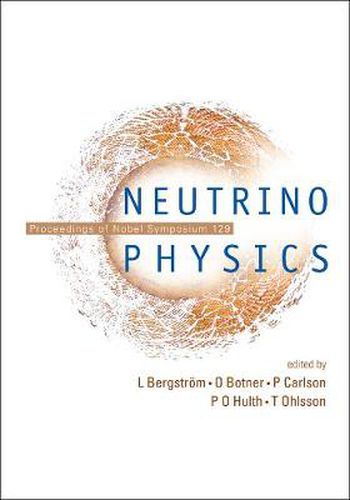Readings Newsletter
Become a Readings Member to make your shopping experience even easier.
Sign in or sign up for free!
You’re not far away from qualifying for FREE standard shipping within Australia
You’ve qualified for FREE standard shipping within Australia
The cart is loading…






Nobel Symposium 129 on Neutrino Physics was held at Haga Slott in Enkoeping, Sweden during August 19-24, 2004. Invited to the symposium were around 40 globally leading researchers in the field of neutrino physics, both experimental and theoretical.The dominant theme of the lectures was neutrino oscillations, which after several years were recently verified by results from the Super-Kamiokande detector in Kamioka, Japan and the SNO detector in Sudbury, Canada. Discussion focused especially on effects of neutrino oscillations derived from the presence of matter and the fact that three different neutrinos exist. Since neutrino oscillations imply that neutrinos have mass, this is the first experimental observation that fundamentally deviates from the standard model of particle physics. This is a challenge to both theoretical and experimental physics. The various oscillation parameters will be determined with increased precision in new, specially designed experiments. Theoretical physics is working intensively to insert the knowledge that neutrinos have mass into the theoretical models that describe particle physics. The lectures provided a very good description of the intensive situation in the field right now. The topics discussed also included mass models for neutrinos, neutrinos in extra dimensions as well as the seesaw mechanism, which provides a good description of why neutrino masses are so small.This book is A4 size and in full color.
$9.00 standard shipping within Australia
FREE standard shipping within Australia for orders over $100.00
Express & International shipping calculated at checkout
Nobel Symposium 129 on Neutrino Physics was held at Haga Slott in Enkoeping, Sweden during August 19-24, 2004. Invited to the symposium were around 40 globally leading researchers in the field of neutrino physics, both experimental and theoretical.The dominant theme of the lectures was neutrino oscillations, which after several years were recently verified by results from the Super-Kamiokande detector in Kamioka, Japan and the SNO detector in Sudbury, Canada. Discussion focused especially on effects of neutrino oscillations derived from the presence of matter and the fact that three different neutrinos exist. Since neutrino oscillations imply that neutrinos have mass, this is the first experimental observation that fundamentally deviates from the standard model of particle physics. This is a challenge to both theoretical and experimental physics. The various oscillation parameters will be determined with increased precision in new, specially designed experiments. Theoretical physics is working intensively to insert the knowledge that neutrinos have mass into the theoretical models that describe particle physics. The lectures provided a very good description of the intensive situation in the field right now. The topics discussed also included mass models for neutrinos, neutrinos in extra dimensions as well as the seesaw mechanism, which provides a good description of why neutrino masses are so small.This book is A4 size and in full color.